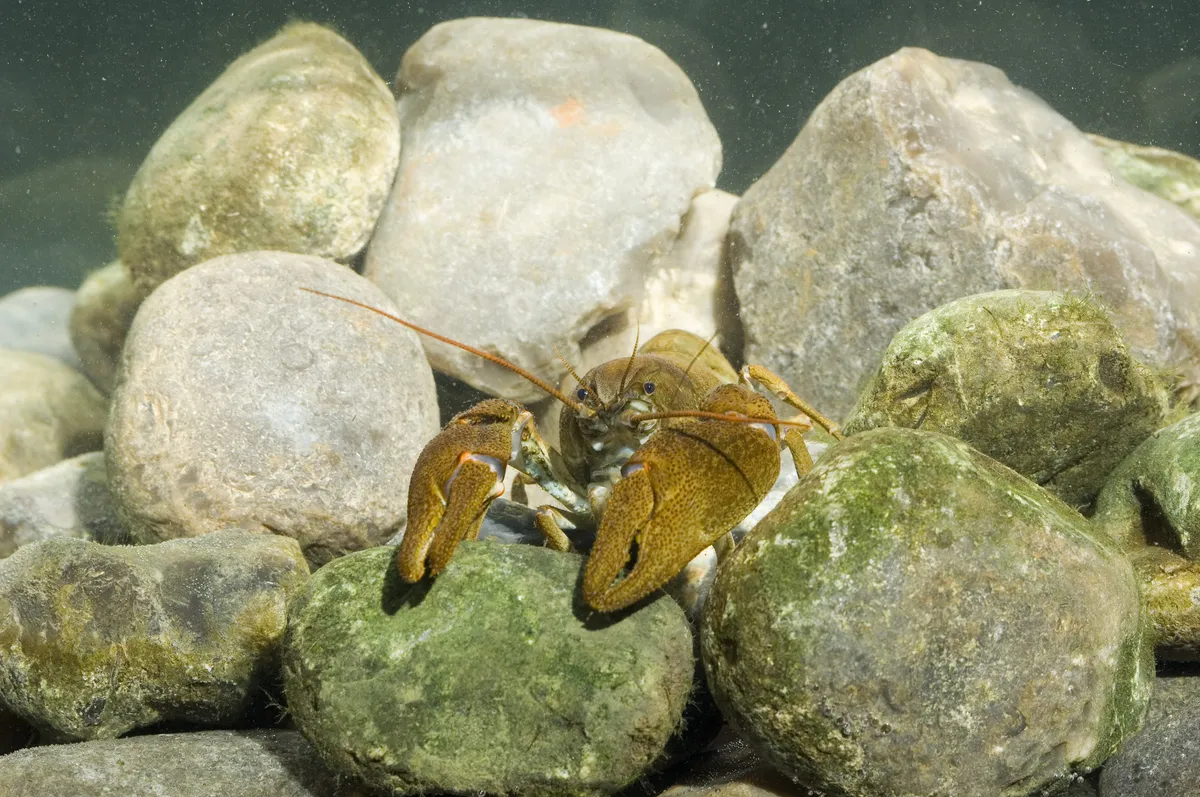A four-month investigation by the UK wildlife charity Buglife has found that the crayfish species used in episode five of the 2020 series of I'm A Celebrity... Get Me Out of Here was a Turkish crayfish (Astacus leptodactylus), also known as the narrow-clawed crayfish, and that the programme makers did not hold the required licence for keeping the species.
Last year, concerns were raised by conservationists and wildlife charities that the non-native insects and other invertebrates used in the bushtucker trials of I'm A Celebrity... could escape into the Welsh countryside.
The Turkish crayfish is listed as an invasive non-native species under the Wildlife and Countryside Act 1981, and damages aquatic ecosystems. According to the GB non-native species secretariat (NNSS), it is well-established in southeast England and there are additional isolated populations elsewhere in England and in Wales. It is illegal to keep the species without a licence, under the Prohibition of Keeping of Live Fish (Crayfish) Order 1996.
The species is native to eastern Europe and western Asia, and was brought to Great Britain in the 1970s for sale in fish markets. The crayfish either escaped from these markets or were deliberately released.
Unlike the non-native American signal crayfish (Pacifastacus leniusculus), Turkish crayfish do not carry the crayfish plague that is threatening populations of the native white-clawed crayfish (Austropotamobius pallipes). However, it is thought that they outcompete the native species where they overlap. White-clawed crayfish are listed as Endangered on the IUCN Red List.

Buglife has been investigating whether a licence was obtained by the programme makers to keep the Turkish crayfish, and has had confirmation from the Welsh government that they were “unable to find any evidence that a licence application was made in this instance”. In addition, Defra confirmed that “no licence was applied for in this case, and Cefas [the licencing authority] would not have issued one for the purpose for which they were used”.
The ITV show was held in the estate around Gwyrch Castle in north Wales, instead of the usual Australian jungle location, due to the coronavirus pandemic. The bushtucker trials involve the celebrities taking part in challenges, sometimes involving live animals, such as cockroaches, snakes, spiders, and rats.
These trails take place in a contained environment, but sometimes contestants can still carry insects on their person on exit. At the time, a spokesperson from ITV said that the insects used in the programme were all non-invasive species, although they did not say exactly which species were being used.
“They are only ever released in a contained area and collected immediately after filming,” said the spokesperson. “They are all purchased commercially within the UK and are normally bred as animal food.”
Matt Shardlow, CEO of Buglife, says “In light of these shocking revelations it is imperative that the police reopen their investigation into potential wildlife crimes committed in North Wales by the makers of I’m a Celebrity…”
“Invasive species cause billions of pounds worth of damage every year; preventing that ecosystem destruction is a high priority. If the police conclude that the programme makers were using invasive species for frivolous entertainment without holding the relevant licences, considering their track record and previous misleading statement, a prosecution would appear to be the appropriate resolution.”
The woods on the castle’s estate are a Site of Special Scientific Interest (SSSI), and are only half a kilometre away from Coed Y Gopa, another SSSI that is managed by the Woodland Trust.
A licence is required from Natural Resources Wales (NRW) under the Wildlife and Countryside Act 1981 to release a non-native species into the wild.
At the time, NRW's chief executive Clare Pillman said they had not received an application from ITV to do so as part of the programme.
The programme has also been criticised by the RSPCA, which has serious concerns about the welfare of the animals being used.
ITV didn’t respond to our request for a comment.
Main image: Turkish crayfish. © Trevor Renals, via GB NNSS
